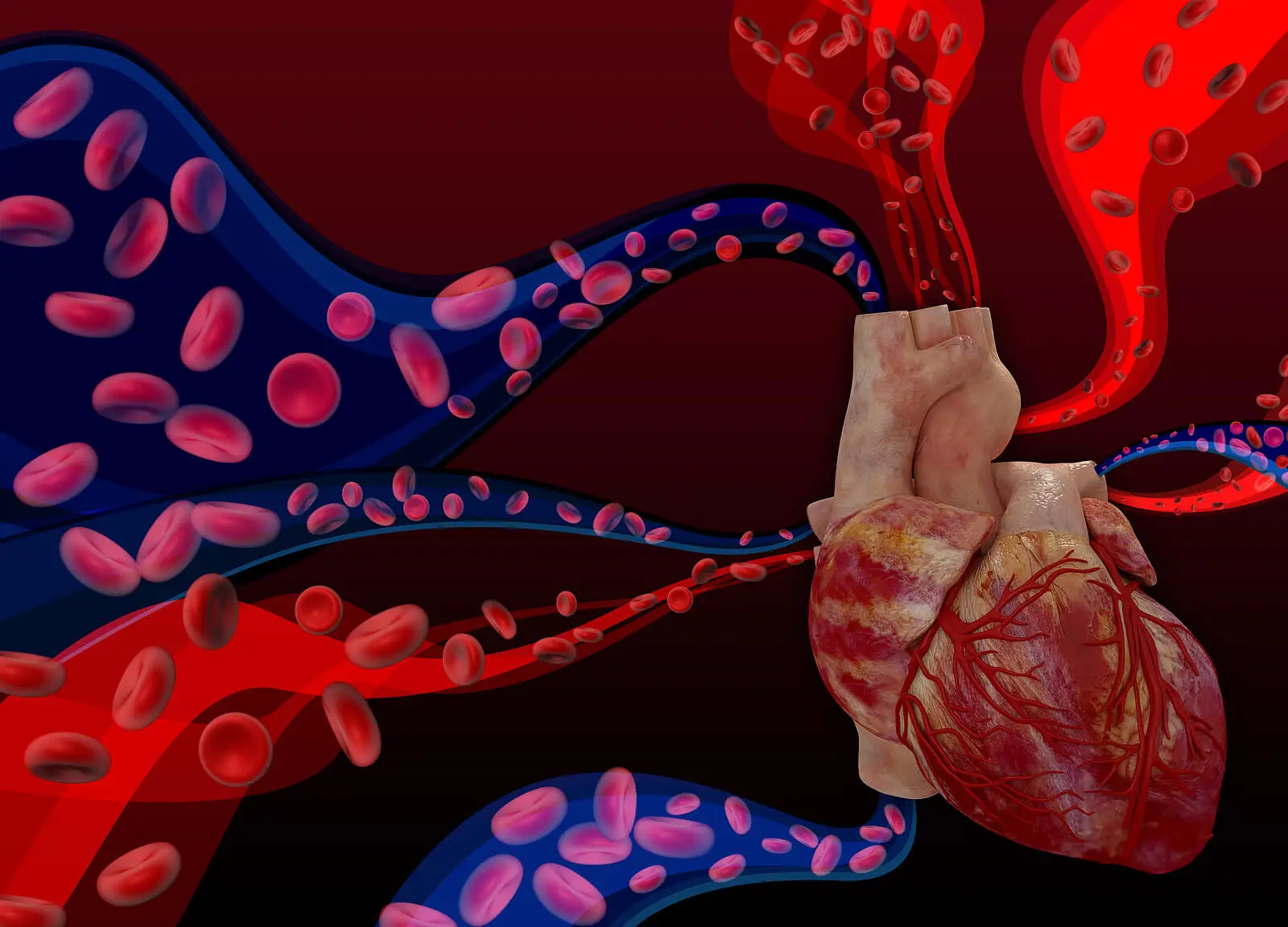Sublingual Nitroglycerin Tablet: What is it Used For?


Reviewed and approved by the pharmacist Franciele Rohor de Souza
The sublingual nitroglycerin tablet is one of the most commonly used forms of administration of this drug. Nitroglycerin is a vasodilator substance, which means it stimulates the blood vessels to dilate.
This helps to increase blood flow that may have been impaired for various reasons. The fact is that this drug is of great importance in certain cardiovascular diseases. For example, it’s extremely helpful in the treatment of angina pectoris. In this article, we’re going to explain everything you need to know about the substance and what its main uses are.
What is a nitroglycerin sublingual tablet?
Nitroglycerin sublingual tablet is a form in which nitroglycerin is administered. It’s a substance that causes the blood vessels to dilate. This is because it works by relaxing the smooth muscle that is part of the vessels.
When nitroglycerin is administered, the return of blood to the heart decreases, as the veins do not push the blood as strongly. Thus, less blood reaches the heart chambers. It must therefore exert less force to pump.
In addition, increasing the caliber of the arteries also reduces blood pressure. In the coronary arteries (which are responsible for carrying oxygenated blood to the myocardium) it acts in a similar way. This helps the heart muscle receive the oxygen it needs to beat properly.
The sublingual nitroglycerin tablet allows it to be absorbed quickly. When placed under the tongue, which is a highly vascularized area, the drug passes directly into the blood and exerts its action.

What is it used for?
As mentioned above, the sublingual nitroglycerin tablet is used as a treatment for certain cardiovascular diseases. As explained in the “Clinical Practice Guide of the Spanish Society of Cardiology,” it’s routinely administered to a person with chest pain suspected of myocardial ischemia.
The most common prescription for sublingual nitroglycerin tablets is the treatment of angina pectoris. This is a type of chest pain that’s very similar to that which occurs when there’s a myocardial infarction.
Angina is when the blood flow to the heart is reduced. In most cases, this is due, as Mayo Clinic specialists explain, to the narrowing of the coronary arteries due to atherosclerosis.
When this occurs, there’s a feeling of tightness in the chest. Angina becomes evident in situations where the need for oxygen increases – for example, during exercise or acute stress. In fact, in many people, the sublingual nitroglycerin tablet is used as a prevention of angina itself.
As the triggers for such an episode are usually identified, they can be used prior to certain situations. In the event that someone has experienced angina when exercising, they could take this drug to prevent its occurrence the next time.
We think you may be interested in reading this, too: Administering Nasal Medications: What You Need to Know
Other indications for nitroglycerin sublingual tablet
As explained in the Drug Information Center fact sheet, nitroglycerin sublingual can be part of the treatment of congestive heart failure. This is a condition that occurs when the heart cannot pump blood effectively.
What happens is that blood backs up in other parts of the body, such as the lungs. This is why the myocardium needs to work harder to pump blood. Nitroglycerin significantly improves this problem.
An article published in the Revista Cubana de Cardiología y Cirugía Cardiovascular comments that the sublingual nitroglycerin tablet is also useful for performing an ergometric test, called a stress test. This test consists of performing physical exercise on a treadmill or a stationary bicycle. This test reveals certain cardiac or cardiovascular problems. The drug helps to predict whether blood vessels are affected.
How the sublingual nitroglycerin tablet is administered
The sublingual nitroglycerin tablet is placed under the tongue. This area is very vascularized, and therefore, the drug is absorbed quickly and passes into the blood, exerting its action.
It’s important to emphasize that these tablets shouldn’t be chewed or swallowed. They should be allowed to dissolve in the saliva. Sometimes, there’s a tingling or burning sensation in the mouth, but this is normal.
Administration varies depending on the objective. In cases where it’s used to prevent angina, it’s recommended to take it 5 to 10 minutes before the triggering activity. The problem is that many people develop a kind of tolerance to nitroglycerin.
Therefore, both doses and intervals should always be prescribed by a physician. In addition, it’s essential that if the effect of the sublingual nitroglycerin tablet becomes less and less, you consult a specialist.
If an angina attack appears, it’s crucial to take a dose at that moment (when the approach has already been prescribed beforehand). If, after 5 minutes, the pain or discomfort does not disappear, a second dose should be taken. If it doesn’t improve even with that second dose, you should go to the emergency room.
Sublingual nitroglycerin tablet considerations
Sublingual nitroglycerin tablet is a drug that can have different side effects. In addition, it shouldn’t be used by certain individuals.
The drug produces significant vasodilation. It doesn’t act on a specific blood vessel, but this effect extends to almost the entire body. This is why reactions such as a feeling of dizziness or weakness may occur. In some cases, there are headaches and even nausea and vomiting. Due to vasodilatation, the skin may also become warmer and redden.
Sometimes, there’s blurred vision, fainting, and tachycardia. Similarly, breathing may be faster than normal and shallow so that not enough oxygen is obtained, reducing the intended effect.
Who shouldn’t take nitroglycerin?
Sublingual nitroglycerin tablets can’t be used in all people. For example, they’re contraindicated in children. This medication is not recommended for use in children under 18 years of age.
Likewise, it’s not recommended for use in women who are breastfeeding their babies. According to the Spanish Medicines Agency, it’s not known whether this substance can pass into the milk and be absorbed by the infant.
People with very low blood pressure or severe anemia should not take it either. If at any time an allergic reaction or intolerance has occurred, it’s essential to avoid it.
Interaction with medications and drugs
Sublingual nitroglycerin tablet is prone to interact with certain medications and drugs, such as alcohol. Alcohol lowers blood pressure, as does nitroglycerin. Therefore, they should not be combined.
Certain antidepressant drugs, such as amitriptyline, can alter the absorption of nitroglycerin. Among their effects is the appearance of dry mouth. Since there’s not enough saliva, it doesn’t dissolve and isn’t absorbed correctly.
Another very important interaction is with sildenafil. This drug is known as Viagra® and is used for erectile dysfunction. As with alcohol, it can cause blood pressure to drop too low.

Like this article? You may also like to read: 9 Medications and Pills for Stomach Pain
Sublingual nitroglycerin treatment is delicate
The sublingual nitroglycerin tablet should only be taken specifically as recommended by a doctor. When a higher dose is taken, headaches, vision problems, and shortness of breath can occur.
As a drug that is absorbed sublingually, it shouldn’t be taken with any other food or drink. The tablet should be allowed to dissolve in saliva. In addition to under the tongue, it can be placed in the cheek or on the gums.
It’s essential always to have it available if your doctor has recommended you take it as part of your treatment. However, it’s important to keep it away from light and humidity.
All cited sources were thoroughly reviewed by our team to ensure their quality, reliability, currency, and validity. The bibliography of this article was considered reliable and of academic or scientific accuracy.
- FICHA TECNICA NITROGLICERINA MYLAN 15 MG/24 H PARCHES TRANSDERMICOS EFG. (n.d.). Retrieved December 1, 2020, from https://cima.aemps.es/cima/dochtml/ft/77813/FT_77813.html
- Portal, J., Rivas Estany, E., Sin Chesa, C., Hernández Acosta, K., & García Barreto, D. (1989). La respuesta a la nitroglicerina en la prueba de esfuerzo diagnóstica de insuficiencia coronaria. Rev. Cuba. Cardiol. Cir. Cardiovasc, 41–50.
- Angina de pecho – Síntomas y causas – Mayo Clinic. (n.d.). Retrieved December 1, 2020, from https://www.mayoclinic.org/es-es/diseases-conditions/angina/symptoms-causes/syc-20369373
- Ficha técnica Nitroglicerina. (n.d.). Retrieved December 1, 2020, from https://cima.aemps.es/cima/pdfs/es/ft/54272/FichaTecnica_54272.html.pdf
- Guías de práctica clínica de la Sociedad Española de Cardiología en la angina inestable/infarto sin elevación ST – ScienceDirect. (n.d.). Retrieved December 1, 2020, from https://www.sciencedirect.com/science/article/abs/pii/S0300893200751645
- Cerezo, Paloma Garcimartín. “Nitroglicerina sublingual:¿ qué saben los pacientes con un evento cardiológico isquémico?.” Enfermería en cardiología: revista científica e informativa de la Asociación Española de Enfermería en Cardiología 58 (2013): 35-39.
- Gómez Padrón, María Virginia, et al. “Trombolisis en el infarto agudo del miocardio: análisis de los tiempos de demora.” Revista Cubana de Medicina 40.2 (2001): 91-95.
- García Barreto, David, et al. “Diagnóstico preclínico de la aterosclerosis: función endotelial.” Revista cubana de medicina 42.1 (2003): 58-63.
This text is provided for informational purposes only and does not replace consultation with a professional. If in doubt, consult your specialist.








